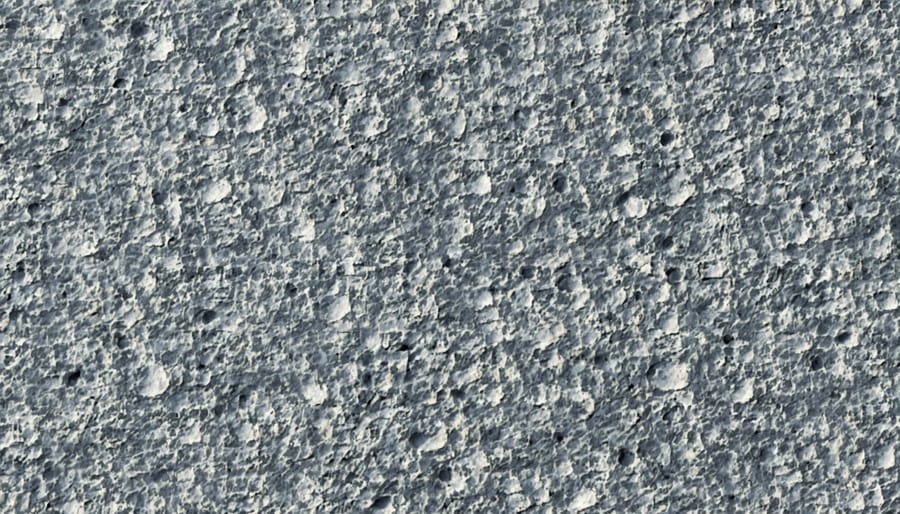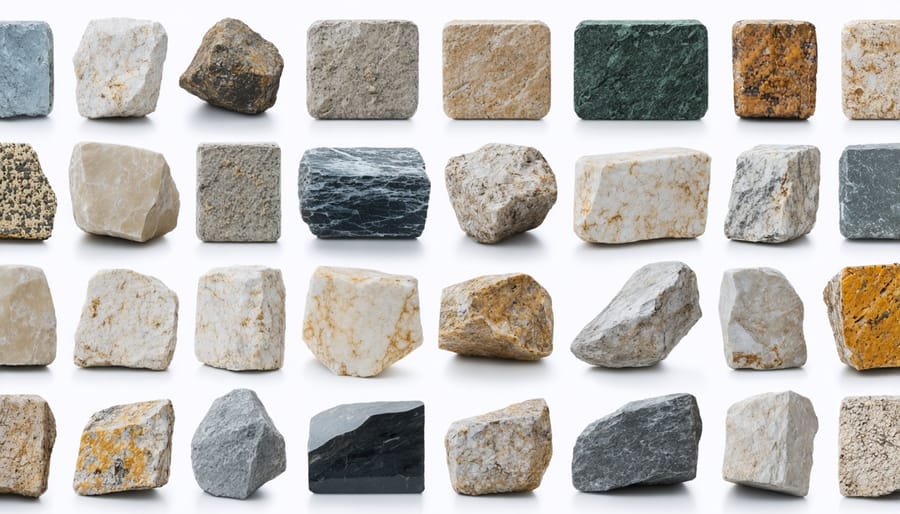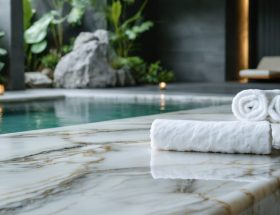Air sustains every living being on Earth, yet its vital role as a natural resource often goes unrecognized until its quality is compromised. As urbanization accelerates and industrial activities intensify, the air we breathe faces unprecedented challenges that directly impact human health, environmental stability, and natural stone wellness benefits.
Consider this: the average person inhales approximately 11,000 liters of air daily, making air quality not just an environmental concern but a fundamental human health issue. From the oxygen that powers our cells to the atmospheric protection that shields us from harmful radiation, air serves as Earth’s life support system.
While we often focus on visible natural resources like water and soil, air’s invisible yet critical role demands equal attention and protection. Its unique properties – being both universally accessible and incredibly vulnerable to pollution – create complex challenges for environmental stewardship and public health policy. Understanding air as a natural resource isn’t just about environmental conservation; it’s about securing the future of human health and planetary wellbeing.
This reality underscores the urgent need for innovative solutions in air quality management, sustainable urban development, and personal environmental responsibility. Whether in our homes, workplaces, or outdoor spaces, the quality of this essential resource shapes every aspect of our lives.
Why Indoor Air Quality Matters More Than Ever

Common Indoor Air Pollutants
Indoor air quality often suffers from several common pollutants that can impact human health and comfort. Volatile Organic Compounds (VOCs) from paints, cleaning products, and synthetic materials are frequent offenders, releasing harmful gases at room temperature. Particulate matter, including dust, pollen, and pet dander, can accumulate indoors and trigger allergies or respiratory issues.
Carbon monoxide from improperly ventilated heating systems or appliances poses a serious health risk, while excess moisture can lead to mold growth and poor air quality. Formaldehyde, commonly found in pressed wood products and some fabrics, continues to off-gas over time. Tobacco smoke, if present, introduces numerous toxic compounds into the indoor environment.
Biological pollutants such as bacteria, viruses, and dust mites thrive in indoor spaces, particularly in carpeting and upholstery. Radon, a naturally occurring radioactive gas, can seep into buildings through foundation cracks. Additionally, everyday activities like cooking, cleaning, and using personal care products contribute to indoor air pollution through the release of various chemicals and particles.
The Health Impact of Poor Indoor Air
Poor indoor air quality can have significant impacts on human health and well-being. Studies show that people spend approximately 90% of their time indoors, making indoor air quality crucial for overall health. Common pollutants like volatile organic compounds (VOCs), mold spores, dust, and other airborne particles can trigger immediate health effects including headaches, dizziness, and respiratory irritation.
Long-term exposure to poor indoor air quality has been linked to more serious health conditions, including asthma, allergies, cardiovascular disease, and certain types of cancer. Children, elderly individuals, and those with pre-existing health conditions are particularly vulnerable to these effects.
Beyond physical health, poor air quality can affect cognitive function and productivity. Research indicates that high levels of indoor air pollutants can reduce mental performance, decision-making abilities, and overall workplace efficiency. Additionally, inadequate ventilation and high humidity levels can create uncomfortable living and working environments, leading to decreased comfort and well-being.
Regular monitoring of indoor air quality, proper ventilation, and the use of appropriate building materials are essential steps in maintaining healthy indoor environments.
How Natural Stone Improves Air Quality
Natural Stone’s VOC-Free Properties
Natural stone stands out as one of the few building materials that inherently promotes better indoor air quality through its VOC-free composition. Unlike manufactured materials such as synthetic countertops, laminates, or engineered surfaces, natural stone doesn’t emit volatile organic compounds (VOCs) that can compromise indoor air quality and human health.
This chemical-free characteristic stems from natural stone’s formation process, which occurs over millions of years through geological processes rather than industrial manufacturing. Granite, marble, limestone, and other natural stones are simply cut, shaped, and polished without the addition of artificial binders, resins, or chemical treatments that could off-gas harmful substances into your living space.
Beyond being VOC-free, stone’s air-purifying properties can actively contribute to healthier indoor environments. Some varieties of natural stone, particularly those with microporous structures, can help regulate humidity levels and filter air pollutants naturally.
For those with chemical sensitivities or concerns about indoor air quality, natural stone provides a reliable solution that doesn’t introduce additional pollutants into the environment. This makes it an excellent choice for spaces where air quality is paramount, such as healthcare facilities, schools, and residential environments designed for optimal wellness.
Moisture Regulation Benefits
Natural stone plays a remarkable role in maintaining healthy indoor air quality through its inherent ability to regulate moisture levels. This natural material acts as a humidity buffer, absorbing excess moisture when indoor air is too humid and releasing it back when conditions become too dry. This process, known as hygroscopic behavior, helps maintain optimal indoor humidity levels between 40% and 60%.
Different types of stone exhibit varying degrees of moisture regulation capabilities. Limestone and sandstone, for instance, are particularly effective at moisture absorption due to their porous nature. This natural characteristic helps prevent common indoor air quality issues such as mold growth and bacterial proliferation, which typically thrive in environments with unstable humidity levels.
The moisture-regulating properties of stone are especially beneficial in spaces like bathrooms, kitchens, and basements where humidity fluctuations are common. When incorporated into walls, floors, or decorative elements, stone materials work continuously to stabilize the indoor environment without requiring any energy input or mechanical intervention.
This passive humidity control not only contributes to better air quality but also helps maintain consistent indoor comfort levels throughout the year. The stable humidity levels created by stone surfaces can also help protect wooden furniture, paper products, and other moisture-sensitive materials from damage, while potentially reducing the need for artificial humidification or dehumidification systems.

Antimicrobial Properties
Air’s natural antimicrobial properties play a crucial role in maintaining environmental health and reducing the spread of pathogens. When air moves freely through ventilated spaces, it helps inhibit the growth of harmful microorganisms through several mechanisms. Fresh air circulation creates an environment where bacteria and mold find it difficult to establish colonies, particularly when combined with appropriate humidity levels.
The presence of natural compounds in air, such as ozone and negative ions, contributes to its antimicrobial effects. These elements can help neutralize certain types of bacteria and viruses, though their concentration varies depending on environmental conditions. In outdoor settings, sunlight works in conjunction with air movement to create natural disinfection through UV radiation.
Indoor air quality benefits significantly from proper ventilation systems that maximize these natural antimicrobial properties. Studies have shown that well-ventilated spaces typically have lower concentrations of airborne pathogens compared to poorly ventilated areas. This natural defense mechanism becomes especially important in buildings where people gather, such as schools, offices, and healthcare facilities.
However, it’s important to note that while air’s antimicrobial properties are beneficial, they work best as part of a comprehensive approach to indoor air quality management. Regular maintenance of ventilation systems and appropriate air exchange rates are essential to maximize these natural benefits and ensure optimal indoor air quality.

Best Natural Stone Choices for Air Quality
Marble and Limestone Options
When selecting natural stone materials for air quality enhancement, certain marble and limestone varieties stand out for their unique properties. Calacatta marble, known for its distinctive veining, contains natural minerals that can help neutralize airborne pollutants. Similarly, Carrara marble offers both aesthetic appeal and air-purifying capabilities through its microporous structure.
Among limestone options, zeolite stone surfaces are particularly effective at improving indoor air quality. These materials naturally trap and filter harmful compounds, making them excellent choices for spaces where air purity is paramount. Travertine limestone, with its characteristic holes and porous nature, also contributes to natural air filtration.
Belgian Blue limestone and Jerusalem Gold limestone are notable for their density and low maintenance requirements while still offering air-purifying benefits. These varieties are particularly suitable for high-traffic areas where durability must balance with air quality enhancement.
For optimal results, consider installing these materials in areas with proper ventilation and air circulation. The natural properties of marble and limestone work best when integrated into a comprehensive indoor air quality strategy, which may include proper ventilation systems and regular maintenance protocols.
Granite and Other Dense Stones
Granite and other dense stones play a crucial role in maintaining optimal indoor air quality due to their unique physical properties. These natural materials are characterized by their extremely low porosity and minimal off-gassing, making them ideal choices for health-conscious building applications.
Dense stones like granite, quartzite, and basalt are formed under intense pressure and heat, resulting in a tight crystalline structure that prevents the absorption and release of airborne pollutants. Unlike synthetic materials, these stones don’t emit volatile organic compounds (VOCs) or other harmful substances that can compromise indoor air quality.
The density of these stones also makes them highly resistant to bacterial growth and mold formation, common issues that can significantly impact air quality in indoor environments. Their non-porous nature means they don’t harbor allergens or provide breeding grounds for microorganisms, contributing to a healthier living space.
When properly sealed, dense stones maintain these beneficial properties for decades. Their durability and resistance to environmental factors make them excellent choices for both indoor and outdoor applications where air quality is a concern. Common applications include kitchen countertops, bathroom surfaces, flooring, and wall cladding, where their natural properties can contribute to improved indoor air quality while providing stunning aesthetic appeal.
For optimal performance, regular maintenance with appropriate stone-specific cleaners helps preserve these air quality benefits while extending the material’s lifespan.
Maintenance Tips for Optimal Air Quality Benefits
To maximize the air-purifying benefits of natural stone, regular maintenance is essential. Start with daily dust removal using a soft microfiber cloth or vacuum with a brush attachment to prevent particle accumulation. This simple practice helps maintain the stone’s natural ability to filter air pollutants and prevents the re-release of trapped particles back into your indoor environment.
Weekly cleaning should involve using pH-neutral stone cleaners specifically formulated for natural stone. Avoid acidic or harsh chemical cleaners, as these can damage the stone’s surface and compromise its air-filtering properties. A gentle solution of warm water and mild soap can effectively clean most stone surfaces without causing harm.
Pay special attention to areas with high moisture exposure, as dampness can affect the stone’s ability to regulate humidity effectively. Use absorbent cloths to dry surfaces thoroughly after cleaning, and address any water spills immediately to prevent mineral deposits that could block the stone’s natural pores.
For optimal performance, schedule professional deep cleaning and sealing every 12-18 months. This maintenance routine helps preserve the stone’s natural porosity while protecting it from stains and damage. The sealant should be breathable to maintain the stone’s air-purifying properties while providing adequate protection.
Monitor your stone surfaces for signs of wear or damage, such as scratches or etching, which can impact their air-filtering capabilities. Address any issues promptly to maintain the stone’s effectiveness in improving indoor air quality. Consider installing humidity monitors in rooms with significant stone installations to ensure optimal moisture levels for both the stone’s preservation and air-purifying function.
Proper ventilation around stone surfaces enhances their natural ability to regulate air quality. Ensure adequate airflow by keeping vents clear and maintaining appropriate spacing between furniture and stone surfaces. This allows the stone to effectively absorb and release moisture and filter air pollutants as intended.
Natural stone stands as a testament to sustainable architecture’s ability to enhance indoor air quality while delivering timeless beauty. Throughout this exploration, we’ve seen how these materials actively contribute to indoor wellness benefits through their inherent properties and characteristics. From their zero VOC emissions to their natural ability to regulate humidity and resist mold growth, natural stone surfaces create healthier living and working environments.
The implementation of natural stone in your space isn’t just an aesthetic choice – it’s an investment in long-term health and environmental responsibility. By choosing these materials, you’re creating spaces that breathe, regulate, and purify, all while maintaining their beauty for generations to come.
As we move toward more health-conscious design choices, the role of natural stone in improving indoor air quality cannot be overlooked. We encourage architects, designers, and homeowners to consider incorporating these materials into their projects. Whether through countertops, flooring, or wall applications, natural stone offers a proven solution for those seeking to create healthier indoor environments.
Take the first step toward better indoor air quality by exploring natural stone options for your next project. Your choice today will impact the air quality and well-being of occupants for years to come.









